Varieties and selection of the best supports for climbing roses, how to create with your own hands
Many gardeners prefer to plant spectacular climbing roses. However, in order for the plant to look beautiful, develop correctly, and bloom profusely, its shoots must be held on a solid foundation. There are several types of supports for climbing roses, you can buy a suitable product in a store, or you can make it yourself from inexpensive materials.
What are they for?
Rose shoots do not twist without a supporting structure. The support allows you to correctly direct the shoots, form a beautiful bush, and create an interesting landscape composition.
Climbing roses are a popular home garden decor option. However, in an improperly fixed plant, buds appear only in the upper part of the bush. Shoots are placed on a support so that, for the most part, they rush horizontally. Then the appearance of buds on the bush will be uniform.
Inexperienced gardeners believe that climbing roses can be planted against a wall or fence, so that the plant itself clings to ledges and bumps. But the lack of high-quality support negatively affects the appearance of the plant and the flowering.
Requirements for supports for roses
The quality of the support for climbing roses is determined by the following criteria:
- Strength, stability. The rose bushes are quite heavy when blooming lush. The supporting structure, including horizontal bars that hang above the ground, must support the weight of the plant. The vertical members must be well anchored to the ground.
- Aesthetics. The support can be made from simple materials, but this option is only suitable for a small private garden. High-quality decorative stands are used to decorate parks, botanical gardens, luxurious household plots. Also, when choosing a product, the varietal characteristics of the plant are taken into account. Small structures are not combined with large bushes, and large, bulky ones - with small-sized roses.
- Compactness. The product should look harmonious in combination with a rose bush. The design looks unattractive if its elements are too noticeable against the background of a flowering plant.
- Profitability. The cost of a finished high-quality product is rather big, so many gardeners prefer to make a support for roses with their own hands.
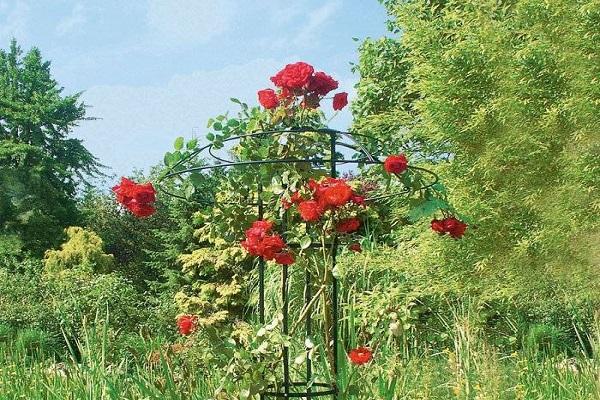
When decorating a site, it is important to determine what material the support will be made of. When choosing a finished product or material for self-production, they take into account the style and external features of the personal plot, the size of the roses, and their financial capabilities.
Stands for climbing roses are made mainly from:
- wood;
- plastic;
- metal;
- stone.
These materials are used individually or combined in one product.

What types of supports should not be used for climbing roses?
Shoots of climbing rose bushes are difficult to attach to obelisks. This shape is optimal for climbing plants with flexible stems.
There are no tendrils on the shoots of roses, with which you can gain a foothold on the supporting surface. Therefore, the owners of backyard plots have to use hooks and pieces of wire to fix the shoots. As the rose grows, its branches are pulled out, all new fixators are used.
A fine mesh is also an unsuitable support option for climbing roses. The plant will not be able to curl independently in small cells, and it will be difficult for the owner to fix the shoots.
If you want to use a mesh, then only with large holes.
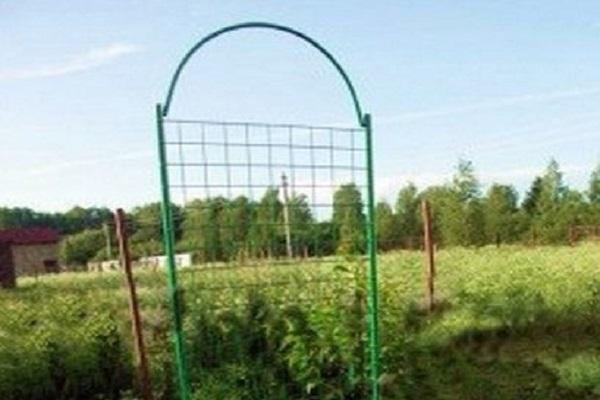
Varieties
There are 4 main types of climbing rose bushes.
Pillar
The simplest design option, but it is not suitable for all varieties of climbing roses. The pillars are made of durable materials, well fixed in the ground. In a small garden area, it is enough to put one post, and in a large area you can make a composition of several supports installed in a row.
Arch and pergola
Arched supports are not only comfortable, functional, but also look aesthetically pleasing. And if they are made of high-quality material, they can easily support the weight of climbing, lush flowering bushes.
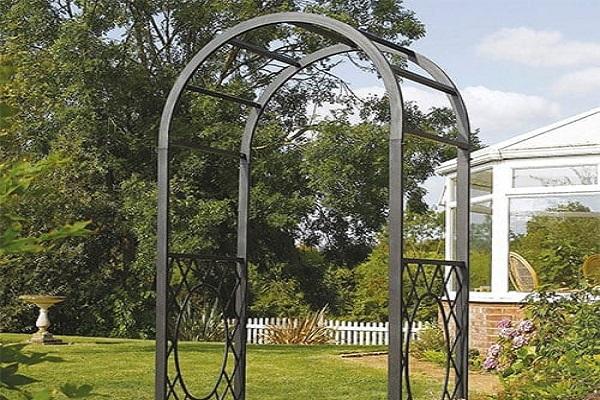
Large gardens are often decorated with arches arranged in a row to form a gallery. For each element of the gallery, bushes of one or different varieties of roses are twisted. The combination of climbing roses of the same variety, but with buds of different shades, turns out to be very beautiful.
Pergola is a type of arch. This is the name of a small platform under a lattice roof, supported by support pillars. Most often, the pillars are made of metal, and the roof is made of wood.
Arches and pergolas can not only serve as a supporting function for climbing roses, but also be used to divide the garden into sectors, to shade individual areas.
Trellis
The simplest support that is easy to do on your own. Moreover, the manufacture does not require expensive materials and a lot of time.
The trellis looks like a grid with large holes, most often a plank. This design is suitable for all the requirements for supports: it is compact, stable, economical, looks good on the personal plot.
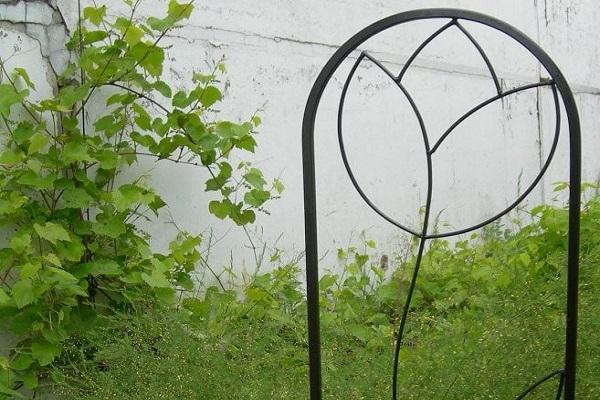
Cones (pyramids)
The structure consists of pillars connected at the top. If such a stand is high, then there is a lot of space between the posts. That is, the shoots of the rose can not only curl along the posts, but also intertwine inside the cone.
How to make supports with your own hands?
If there is no money to buy an expensive store support for roses, then you can make it yourself. The pyramidal structure is the easiest to manufacture.
For the manufacture of the support, two wooden boards 6 m long and 2.5 cm thick are taken. A hacksaw and self-tapping screws are prepared from the tools.
Algorithm of actions:
- A meter is cut from each board.
- Meter cuts are halved, set aside.
- Planks 5 m long are also cut in half.
- The workpieces are divided lengthwise to get 4 cm wide slats.
- At the bottom of the pyramid, inserts are made of boards of 0.5 m.
- They are brought together at the top. The sides are reinforced with slats.
- Thin slats are used as horizontal steps between the pillars of the pyramid.
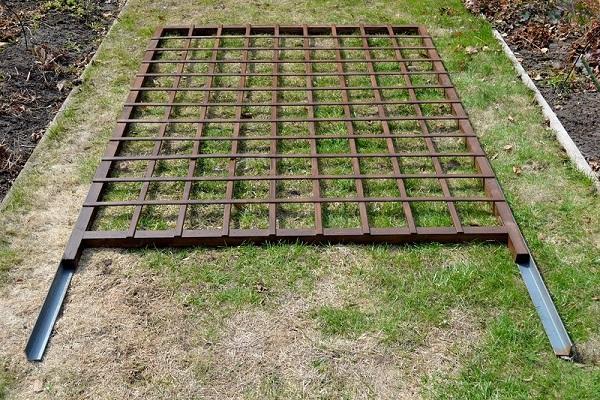
Tips from a landscape designer
To ennoble the personal plot, to create a really beautiful composition of climbing roses, it does not hurt to adhere to the recommendations of experienced landscape designers:
- It is advisable to make crossbeams on poles only if the plant is strongly branched.
- Large, massive supports are combined with bushes that give large buds. And narrow, vertically directed products are more suitable for varieties with small flowers.
- The support should be placed before the bush is planted. If you do the opposite, then the installed structure injures the roots of the plant.
- Shoots will curl in a chaotic manner if not guided. Therefore, the owner must constantly shape the bush, fix the branches in the right places.
- Withered flowers are cut off so that new buds form more actively.
- If roses are planted along a fence or wall, then the supporting surface is covered with paint or varnish. This will prevent possible infection of the shoots.
Experienced gardeners are advised to regularly prune roses, apply mineral fertilizing. Without these procedures, it will not work to form beautiful, lush flowering bushes.









